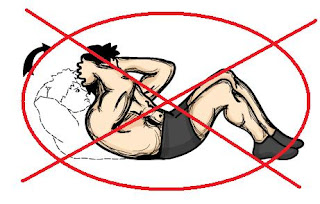Scientific Principles For Effective Muscle Gain
It's an unfortunate reality that throughout the years there has been a growth of strength training techniques that have no scientific proof to back them up. Have a look at the facts presented in this outline of muscle gain principles and make up your own mind.
Below you will find Scientific Guidelines for strength training that have always been around but are not followed by many training systems these days.
1. Limited Energy Level
A strength-training program should be short and simple as you only have a limited amount of energy per training session.
Scientific studies reveal that blood sugar levels (energy) start to deplete after 30 mins, so exercise selection and the time taken to perform them is crucial.
What you should be aiming for is stimulating as many muscle fibres in the shortest period of time available.
Your blood sugar levels deplete after high intensity training (usually between 20 - 30 minutes) and remember that you need energy to recuperate after the workout.
The trick is to give yourself a high intensity workout before your blood sugar level depletes, and then you will have given your body the exercise that it requires to gain the maximum amount of muscle possible.
2. Progressive Overload
Progressive Overload is the main exercise principle you need to be aware of in order to get the results that you're after with strength training.
The two most important points are:
 Complete your exercise with perfect technique
 Push to total failure when doing a set and overload the weight on the bar progressively. (Overload your targeted muscles to beyond what there used to)
Basically this means that when the body is stressed by high intensity training beyond its normal demands, the body will adapt to these new demands of improved strength.
When I say "normal demands," I mean what level of stress/strength your body is used to now.
An example: The set that you performed last week using the same technique and weight, your body will now have adapted to. If you stay at this level your muscles will not become stronger or bigger, so this is where the Progressive Overload plays a major part.
Once your muscles have adapted to a particular weight then it'll be time to overload them further (add more weight, speed, repetitions). You'll need to keep on repeating this process of overload if you want to become stronger.
Remember to always use GOOD TECHNIQUE. Technique must never be sacrificed for extra load.
3. Training Frequency
The sad reality is that the popular high volume type of training that you find in bodybuilding books and magazines (and used by the stars) is irrelevant to the majority of the population and has a shocking failure rate.
What is good for Joe Star is probably not good for you. Everybody has different genetics; most of us have poor genetics and are not taking steroids like the stars.
The only way the majority of us can make any gains at all is to perform short intense workouts followed by long periods of rest so that we don't overtrain.
4. Over-Compensation
Many studies conducted around the world have shown clearly that recuperation from strength training requires far more rest time than previously thought.
Infrequent, short, high intensity weight training sessions, followed by the required amount of time to recover and become stronger is necessary for you to increase your functional muscle.
Here's what you need to do - allow your body enough recuperation time for over compensation to take place, so that the muscles can adjust to their new strength and growth.
5. Exercise selection for intensity
I can't stress enough of how exercise selection is absolutely crucial. There are only a few exercises that you really need to perform. These exercises consist of multi-joint movements.
These particular exercises are far superior to that of isolation exercises (working 1 muscle group at a time) because you are required to use more muscles from every muscle group.
By using these exercises your whole body will be worked hard.
6. Visualization
Over my 20 years in the industry, I've noticed that this area is by far the most neglected by mainstream health and fitness professionals...
Most books or courses concentrate on the physical side of muscle gain or fat loss and completely neglect the mental side of things.
By training your mental state as well as your physical body you can even further progress in muscle growth.




